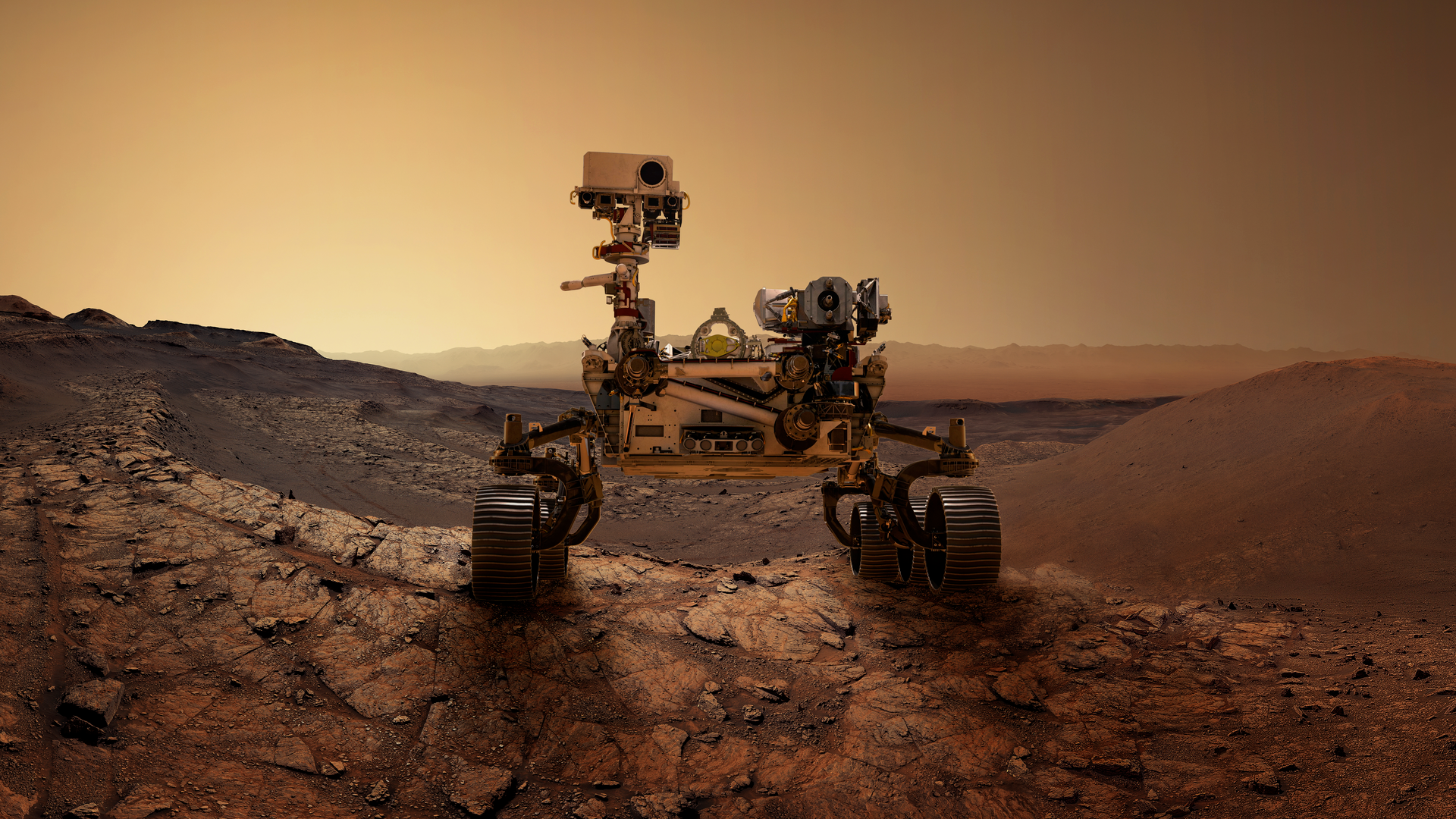Reviewed by Lexie CornerFeb 26 2025
A recent study published in Frontiers in Astronomy and Space Sciences reports that scientists have successfully tested a compact, laser-powered mass spectrometer designed to detect microbial fossils in Earth's gypsum deposits, which are similar to sulfate formations found on Mars. This breakthrough suggests the instrument could soon be used in the search for ancient life on the Red Planet.

Image Credit: Frontiers in Astronomy and Space Sciences
Mars's gypsum deposits may hold clues about past life on the planet, including microorganisms similar to the first life that evolved on Earth four billion years ago. However, the right tools are needed to test this theory.
Four billion years ago, microbes living in Earth’s pools and seas gave rise to the first life. What if a similar scenario occurred on Mars? How could we prove it? By showing they can detect microbial fossils in gypsum samples that resemble sulfate rocks on Mars, scientists searching for evidence of ancient Martian life have now found a way to test this theory.
Our findings provide a methodological framework for detecting biosignatures in Martian sulfate minerals, potentially guiding future Mars exploration missions. Our laser ablation ionization mass spectrometer, a spaceflight-prototype instrument, can effectively detect biosignatures in sulfate minerals. This technology could be integrated into future Mars rovers or landers for in-situ analysis.
Youcef Sellam, Ph.D Student and Study First Author, Physics Institute, University of Bern
Water, Water Everywhere
Billions of years ago, Mars’s water dried up. As pools evaporated, minerals were left behind, forming gypsum and other sulfates, possibly preserving any remaining organic life. This suggests that if microorganisms like bacteria once lived on Mars, traces of them could be preserved as fossils.
Gypsum has been widely detected on the Martian surface and is known for its exceptional fossilization potential. It forms rapidly, trapping microorganisms before decomposition occurs, and preserves biological structures and chemical biosignatures.
Youcef Sellam, Ph.D Student and Study First Author, Physics Institute, University of Bern
Before identifying microbial fossils on Mars, it is essential to first demonstrate the ability to detect similar fossils in known environments, such as Mediterranean gypsum formations from the Messinian Salinity Crisis.
“The Messinian Salinity Crisis occurred when the Mediterranean Sea was cut off from the Atlantic Ocean. This led to rapid evaporation, causing the sea to become hypersaline and depositing thick layers of evaporites, including gypsum. These deposits provide an excellent terrestrial analog for Martian sulfate deposits,” said Sellam
An instrument that could be utilized on a spaceflight was chosen by the scientists: a tiny laser-powered mass spectrometer that can examine a sample's chemical makeup down to the micrometer level. Using guidelines to help distinguish between potential microbial fossils and natural rock formations, they used an optical microscope and the mass spectrometer to analyze gypsum samples from the Sidi Boutbal quarry in Algeria.
These guidelines include irregular, sinuous, and possibly hollow shapes, as well as the presence of minerals like clay or dolomite, which can be influenced by bacteria, carbonaceous material, and chemical elements essential for life.
Life on Mars?
In the Algerian gypsum, the researchers found long, twisted fossil filaments that were once thought to be cyanobacteria or benthic algae but are now believed to be sulfur-oxidizing bacteria, like Beggiatoa. These filaments were surrounded by dolomite, clay minerals, and pyrite, all embedded in the gypsum. Since prokaryotes - cells without a nucleus - supply the elements needed for clay formation, the presence of these minerals suggests organic life was once present. They also help form dolomite in acidic environments like Mars by concentrating ions in their cell envelopes and raising the surrounding alkalinity.
For dolomite to form in gypsum without organic life, high temperatures and pressures - conditions that would have dehydrated the gypsum - are required. These conditions do not match what we know about the Martian environment.
If mass spectrometers detect clay and dolomite in Martian gypsum, along with other biosignatures, it could be a key sign of fossilized life. Further analysis of other minerals and searching for filaments similar to organic ones could help confirm this.
While our findings strongly support the biogenicity of the fossil filament in gypsum, distinguishing true biosignatures from abiotic mineral formations remains a challenge. An additional independent detection method would improve the confidence in life detection. Additionally, Mars has unique environmental conditions, which could affect biosignature preservation over geological periods. Further studies are needed.
Youcef Sellam, Ph.D Student and Study First Author, Physics Institute, University of Bern
“This research is the first astrobiology study to involve Algeria and the first to use an Algerian terrestrial analog for Mars. As an Algerian researcher, I am incredibly proud to have introduced my country to the field of planetary science. This work is also dedicated to the memory of my father, who was a great source of strength and encouragement. Losing him during this research was one of the most difficult moments of my life. I hope that he is proud of what I have achieved,” said Sellam.
Journal Reference:
Sellam, Y., et al. (2025) The search for ancient life on Mars using morphological and mass spectrometric analysis: an analog study in detecting microfossils in Messinian gypsum. Frontiers in Astronomy and Space Sciences. doi.org/10.3389/fspas.2025.1503042